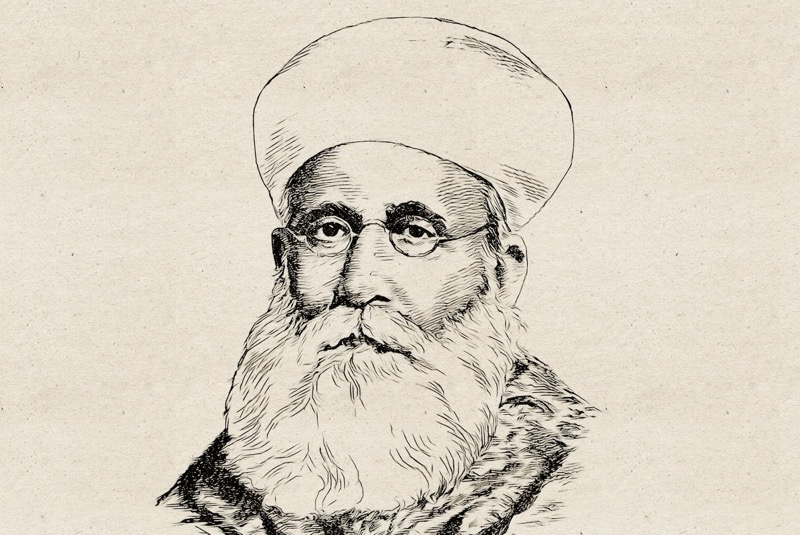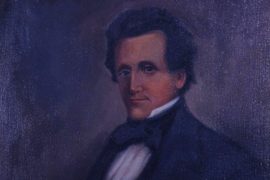One night, a twelve-year-old boy ran away from his house. With a bundle of clothes and some books under his arm, he walked from morning to evening, away from Surat. He was running away from his father, who would not let him pursue higher education, but the boy was determined. He wanted to make his way to Mumbai and build his own life.
Fardunjee Murzban, the founder of the longest surviving newspaper in India, Bombay Samachar, came from an orthodox Parsi-Zorastrian priest family. He was born in 1787 in Surat and learned Persian and Gujarati until his father decided that he would pursue Zoroastrian knowledge of religious ceremonies.
Fardunjee was placed under the tutorship of a well-known teacher, Fazel-ulma-Mofti Jahiroddin, who encouraged young Fardun to continue learning Persian. At the time, Fardunjee also started learning Sanskrit, the basics of medicine, and some other languages. With the acquisition of more knowledge, the hunger to pursue higher studies grew, and Fardunjee asked his father to send him to Bombay.
That’s where conflicts began. Murzbanjee was stern and orthodox, and as a priest, he wanted Fardunjee to carry on the family profession. Disagreements between son and father kept growing until, one day, Fardunjee ran away. When Fardunjee was brought home by the search party employed by his father, he faced the mighty wrath of the patriarch, who locked him for three days in an underground room.
Fardunjee finally made it to Bombay at the age of 18, in 1805, after which his life in Surat is history. He got many letters from his father to return, but Fardunjee was determined to make something great out of his life.
In Bombay, Fardunjee lived under the mentorship of his guide, friend, and philosopher, Mulla Feroz. Mulla had a great library of many Persian classics, and Ferdunjee began his early pursuit of knowledge in those quarters as a caretaker and preserver of old books.
Fardunjee was married in infancy, a common tradition in the Parsi community at the time. His wife was Kuvarbai, the daughter of a cloth merchant in Surat. Mulla Feroz set up a separate house for the couple in Bombay. After that, Fardunjee began to look for ways to bring in a sustainable income to cover the expenses of the house; however, his life would remain a constant pursuit of knowledge and learning.
In 1808, Fardunjee took up the business of a bookbinder, a rare service at the time, and Fardunjee had a good hand at it, having nurtured the skill over his service at Mulla’s library. Sometime later, he also opened up a private postal service in partnership with other Parsis, but he did not enjoy the mechanical work and soon gave it up.
Jijibhai Behrumji Chhapgar, a friend from the Parsi community, worked as a printer at the Bombay Courier printing press. Fardunjee used to visit him at work quite often. It is said that their frequent meetings inspired Fardunjee to invest in opening a vernacular press in 1812. This Gujarati press, the first one in the history of Bombay, highly contributed to the literacy of the Gujarati community of Bombay.
He first printed a Hindu Panchang (Almanac for the Hindu Samvat Year in Gujarati), the first of its kind; it was only six years later that the Bengali Calendar began printing in Calcutta. He printed many books and translations following that. The most famous ones are the Gujarati translation of the Persian book Dabistān-i Mazāhibm, sacred to Parsis, in 1815, and a Gujarati translation of the Khordeh Avesta in 1817, another sacred book used by Parsis daily.
On New Year’s Day of 1818, he launched Khordeh Avesta-ba-mayani, (The Khordeh Avesta, with its meaning). Until the launch, Parsis could only read the text and couldn’t necessarily understand it. For this, his press gained a lot of fame and respect in the Parsi community. In 1822, he began printing English literature, science, and religion translations. He was acknowledged by the government for spreading knowledge amongst the Gujarati community of Bombay as he circulated translations.
Soon after, Fardunjee Murzban entered the field of Journalism. Mountstuart Elphinstone, the Governor of Bombay, had urged Fardunjee to print a vernacular newspaper. At the time, Samachar Darpan was the only vernacular newspaper published in Bengali. Fardunjee began learning the English language so he could grasp the European Journals. Then, finally, on 10 June 1822, Fardunjee issued a prospectus of a weekly journal.
Known as Mumbai na Samachar (News of Bombay), a plan for the most organised weekly at the time was laid out as per the instructions given by the British Government. It promised a modern layout and an up-to-date journal.
Indian public welcomed the newspaper with open arms, and he got a hundred and fifty subscribers in just a few days. The readership of the newspaper was diverse and included Parsis, Europeans, Hindus, and Muslims from Bombay, Surat, Poona, Daman, and even Calcutta. The first paper was published on 1 July 1822, and the initial subscription fee was Rs. 2 per month.
Fardunjee Murzban’s writing was considered to be of the utmost quality, even amongst the European public. His words formed sentences with care and caution, never aiming to insult or defame someone. Fardunji, as an editor, always made polite arguments regarding what he thought was right, what appeared to him as wrong, and what was of service to the public.
The newspaper holds records of the merits of the British government and compares them to previous rulers. It even stresses that the freedom of the press was a birthright of Indians. Fardunjee maintained the paper’s very instructive and educative nature—not one to create a sensation but simply a medium of communication between the Sovereign and their subjects.
Fardunjee was a social reformer and used his pen to spread knowledge regarding modern medicine, especially vaccines. Mumbai na Samachar was an active voice against the evils of society, and Fardunjee wrote about widow remarriages, sati, freemasonry, education for women, etc.
A certain religious controversy regarding the calendar of Parsis divided the community into two parts: orthodox and reformist. Fardunjee had opened the columns of Mumbai na Samachar to both sides of the controversy; however, this conflict between the community trapped Fardunji in many conspiracies. Fardunjee held on to his reporting fearlessly regardless of threats from the opposition but became a victim of a scandalous rumour in July 1831.
In 1832, he lost his trading ship in China. Soon, he lost his lands, his press, and the newspaper. Financial loss and threats forced him out of Bombay. He could never return as a journalist, merchant, and social and religious reformer in Bombay. He settled down at a Portuguese settlement in Daman and practised oriental medicine until his death on 23 March 1847.
Mumbai na Samachar has been running for more than two centuries years. Today, it is the first Gujarati newspaper, and the second vernacular newspaper is the oldest surviving publication in India. The weekly had turned into a daily sometime after Fardunjee handed over the newspaper to Temulji Kastaraji Mirza on 13 August 1832.
In an interview, the current editor of Mumbai Samachar, Nilesh Dave, said that the newspaper had two principles:
- Steer clear of controversies
- Only publish authentic news, even if it meant that the news was printed late
Both the principles seem to have been drawn from the life and experiences of its late founder.
-30-
Copyright©Madras Courier, All Rights Reserved. You may share using our article tools. Please don't cut articles from madrascourier.com and redistribute by email, post to the web, mobile phone or social media.Please send in your feed back and comments to [email protected]











